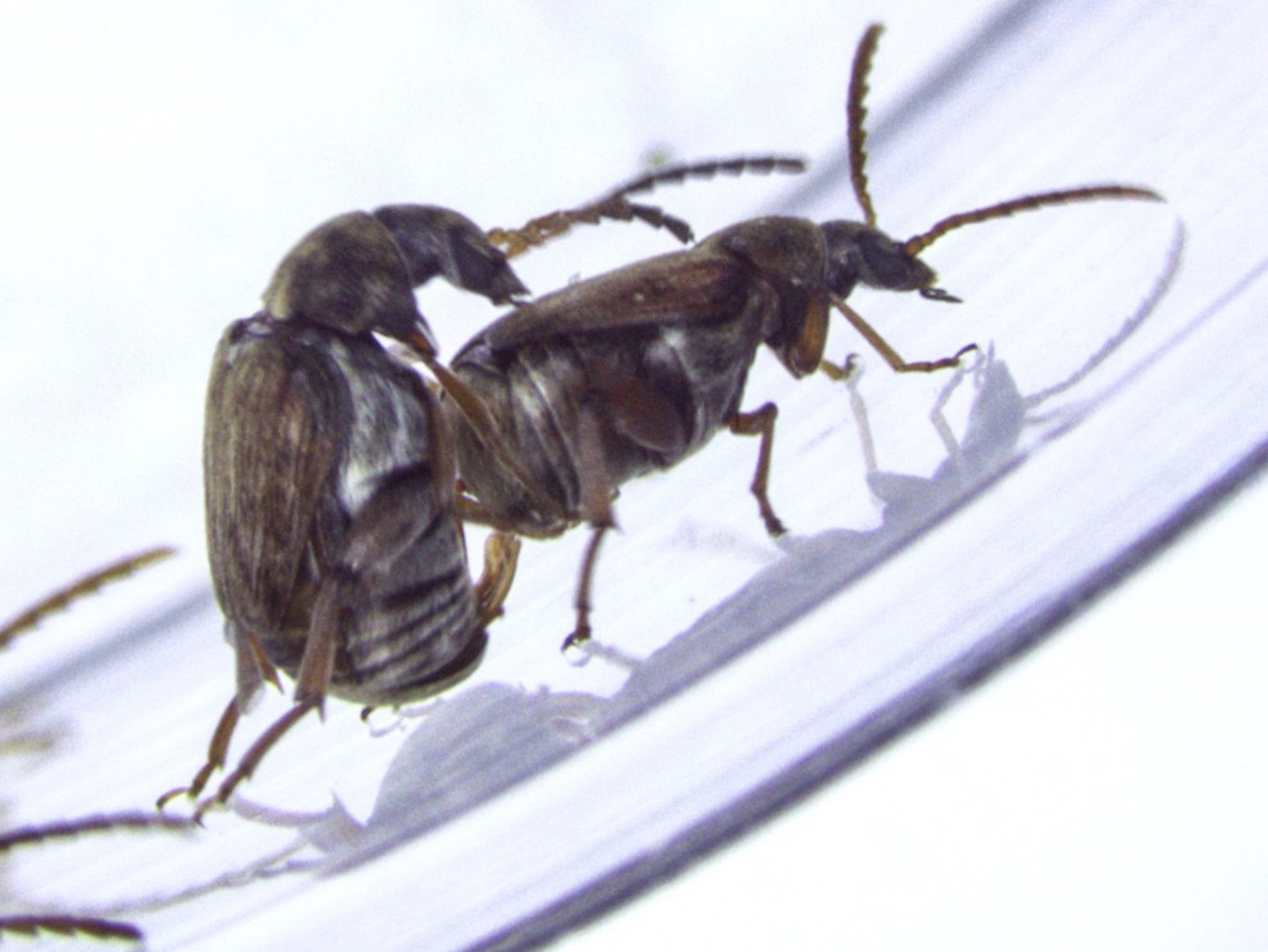Genes that encourage same-sex mating in beetles help opposite gender reproduce
'The genetic mechanism explaining the occurrence of same-sex sexual behaviour that we demonstrate in these beetles could apply equally well in very different animals'

The reasons why it is common for animals to engage in sexual behaviour with others of the same gender has long puzzled evolutionary biologists.
After all, it doesn’t actually lead to the production of offspring and the continuation of the creature’s genes.
But now researchers in Sweden have discovered that genes which encourage beetles to engage in what they call same-sex sexual behaviour (SSB) can also be evolutionarily advantageous to the opposite sex.
When they bred male beetles selectively for SSB, they found that “their sisters laid more eggs and produced more offspring than before”. And breeding females for SSB resulted in genes that helped the males reproduce.
Professor David Berger, of Uppsala University, said: “Our findings show that studying the genetic links between different characteristics in males and females can hold major clues to how genetic conflicts between the sexes shape the evolution of traits, and same-sex sexual behaviours are just one example of this.
“The genetic mechanism explaining the occurrence of SSB that we demonstrate in these beetles could apply equally well in very different animals.”
Seed beetles go through a courtship ritual before attempting to mate. In the males, they then mount their partner from behind and insert their version of a penis.
Sex between males carries a small but significant risk as the penis can get trapped in the wing casing of the other male, leading to the death of one or both. Sex between females, the researchers said, was “less pronounced” with no risk of death.
Another of the research team, Dr Alexei Maklakov, stressed that beetles were very different to humans.
For example, the beetles bred for SSB would still mate with females. Some of the genes concerned were linked to the idea of “opportunity cost”, Dr Maklakov said.
While some beetles spend time working out if another beetle is of the opposite sex before mating, others deploy a scatter gun approach and there is an evolutionary play-off between the two.
The first group might miss chances to mate, while the second might get tired out due to too much attempted sex.
Dr Maklakov stressed it was important not to try to read too much into their research.
“It’s very difficult to extrapolate directly in any way from animals to humans,” he said.
Join our commenting forum
Join thought-provoking conversations, follow other Independent readers and see their replies
Comments
Bookmark popover
Removed from bookmarks